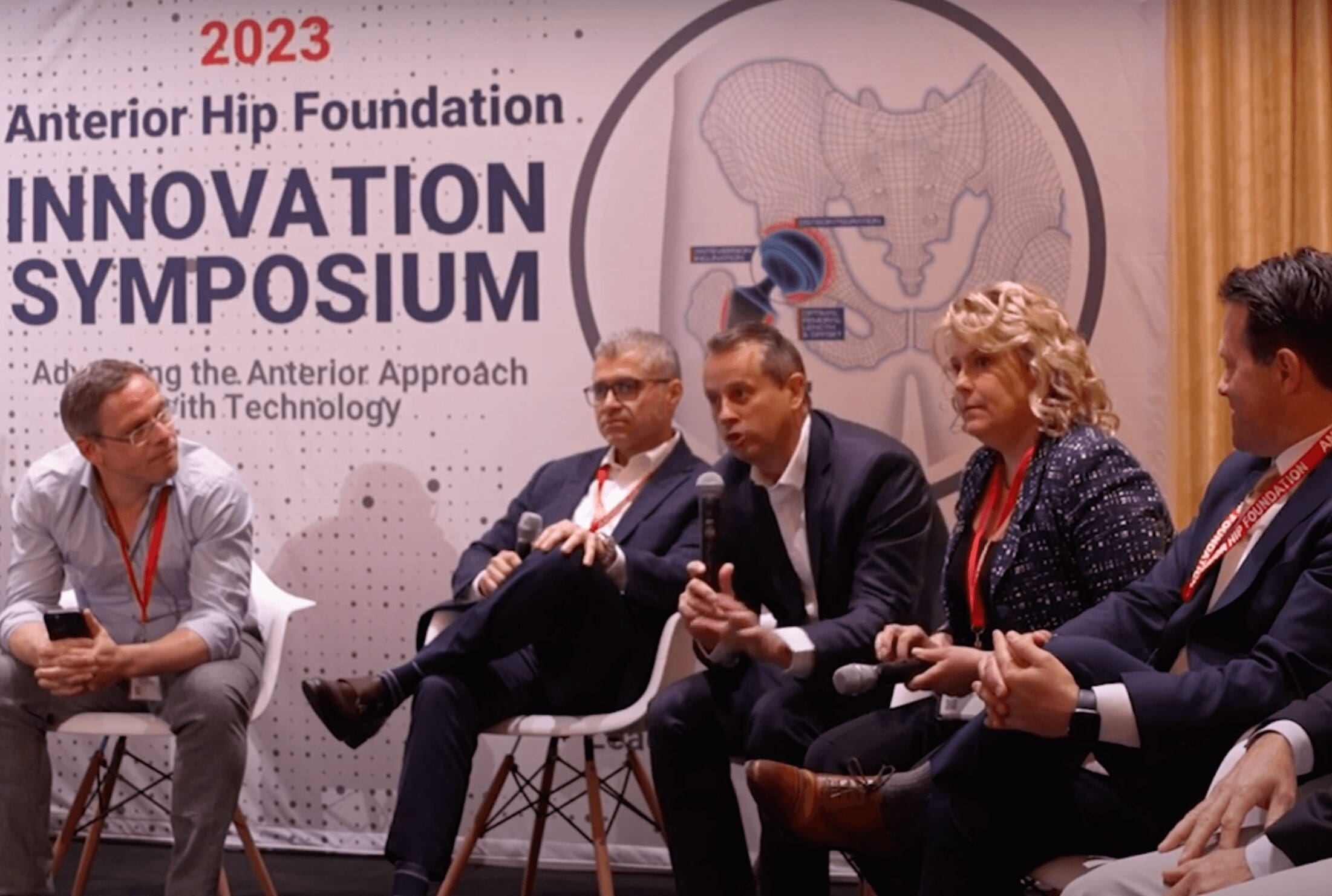Dr. Alexander Sah’s Anterior Hip Journey - from Non-adopter to Evangelist
My journey with anterior hip surgery and the Anterior Hip Foundation (AHF) has brought me a long way in a short timeframe. Starting out as the only one in the room not doing an anterior approach, I became a believer, then advocate, to a published book author on the subject, and now current AHF president. Here’s how that happened:-

Changing approach means everyone else has to change workflows too
Despite some initial trepidation, it turned out that my concerns about the learning curve were unfounded. While the learning curve must be taken seriously, modern teaching and resources have significantly shortened the time to becoming comfortable with the approach. For example, having Charlie join me for my first few cases was invaluable, as there’s a lot of change to manage initially. It takes a village to run a successful surgery – and everyone in the OR needs guidance regarding their contribution to an entirely new workflow – from the scrub tech, to the C-arm operator, to whoever is responsible for handling the table.
I know that the recommendation is to select simple cases initially, however with Charlie to support me, I figured I’d dive straight in with some more challenging ones. I started with a muscular 6’6” tall male, a patient with an underlying neuromuscular condition that significantly increased his risk for instability post-surgery, and a female with challenging anatomy. Having such an experienced colleague on hand meant that I could bypass months of figuring best practices by myself.
I continued to operate from the front, and the more anterior surgeries I completed, the more I appreciated the benefits – from the muscle-sparing approach, patients’ fast recoveries, to the excellent acetabular exposure. I learned how to navigate challenges associated with femoral exposure and I fully leaned on intraoperative fluoroscopy for precise joint reconstructions. I very quickly became a believer. What I had least expected had come true- there was a better way to perform hip replacement.
During my first year of anterior surgeries, I was invited back to speak at the next AHF event – this time to share my perspectives as a recent adopter of the anterior approach. And the following year I was back again, sharing my early results and outcomes.
Anterior Hips are now mainstream
Fast forward to today – I’m proud and honored to be the current Anterior Hip Foundation president – working alongside Joel, Charlie and the rest of the board members to support new generations of hip replacement surgeons. The great news for the recent graduates or newly adopting surgeons is that the industry has changed a great deal over the last 5+ years. For a start, anterior hip surgeries are now very much mainstream. I was encouraged to hear that, at the recent AAHKS meeting, 54% of surgeon members said that they now perform the anterior approach.
I believe that the learning curve today has also dramatically changed. When I started in practice, the literature at that time suggested that it took about one hundred cases to achieve proficiency in anterior hip replacement. I think this is still accurate for those who endeavor to adopt the anterior approach while in practice, figuring it out by themselves. However, today every surgeon coming out of residency and fellowship in the US has a head start, having been exposed to anterior hip surgeries in training and having a solid foundation of skills to build upon. Cadaver labs, videos, virtual reality, online resources, reverse visitations, and educational materials are now also more readily available – just consider the vast number of technique videos and presentations available online today that cover almost every aspect of the technique.
The purpose of the AHF is to challenge existing beliefs
My route to anterior hips may have been circuitous– but I wouldn’t have it any other way. As surgeons, we tend to avoid changing something that’s working. But I believe that it’s actually good practice to regularly challenge our existing beliefs. And that’s really what the AHF is about. It’s about questioning the status quo – asking whether things can be done better. That’s what drives constant improvement. And the culture of the AHF means that everyone’s opinion is welcome. Even participating initially as a relative outsider I found the AHF meetings and organization unique. It’s a very collegial and welcoming community – regardless of your surgical preferences.
The underlying ethos of the foundation is about advancing the anterior approach. So, I invite any surgeon who performs hip replacements, at any stage of his/ her career, to participate, and contribute views and perspectives. There’s something for everyone – even posterior hip enthusiasts are welcome -as ultimately, it is diverse opinions that drive innovation.
Join us in Las Vegas for #AHF2023 – let’s reimagine the future of arthroplasty together.






